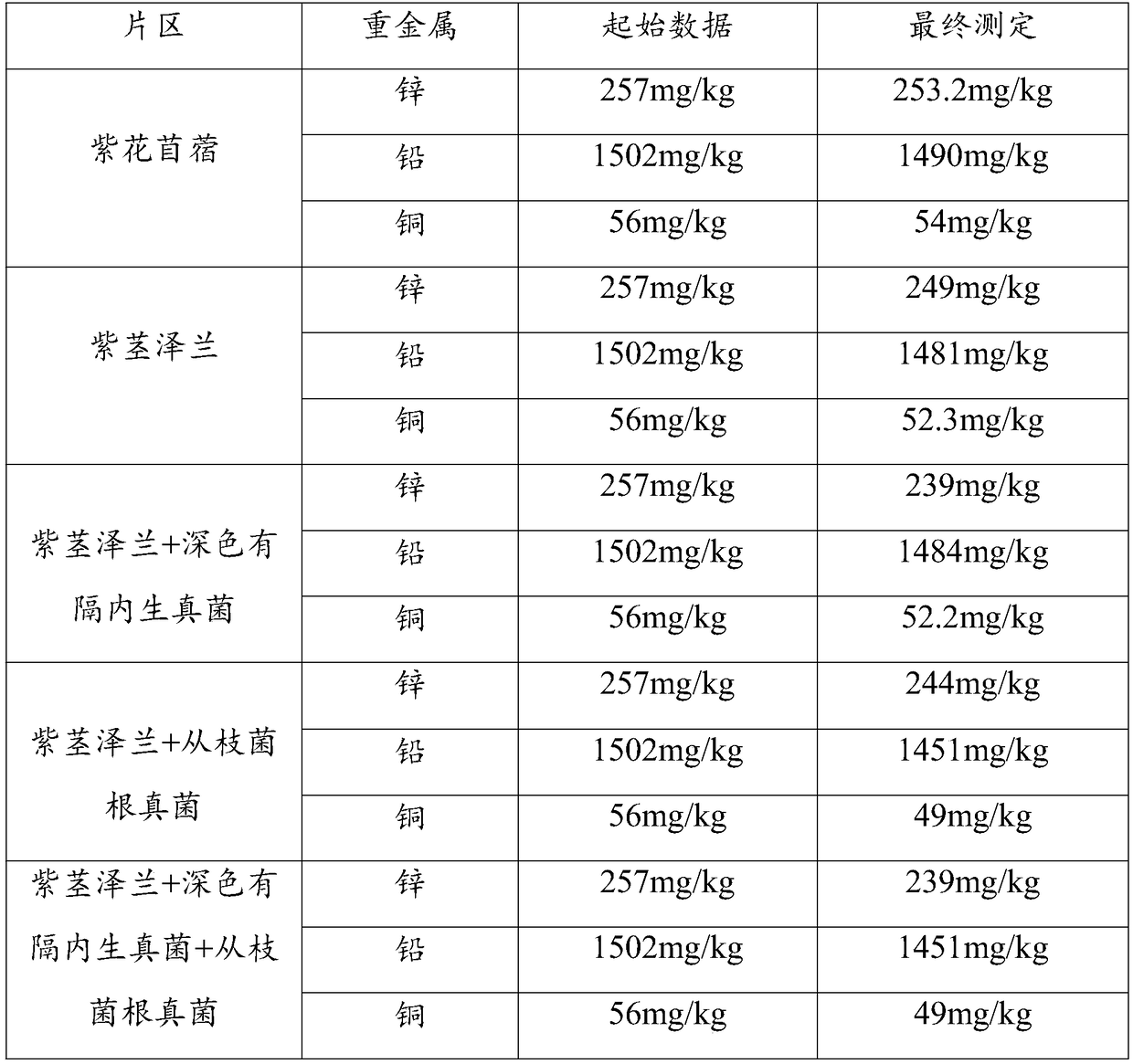Method for restoring heavy metal zinc-lead-copper polluted soil by ageratina adenophora
A technology of E. japonica and heavy metals, which is applied in the field of bioremediation, can solve the problems of remediation and restoration of soil contaminated with heavy metals, and achieves the effects of improving tolerance and enrichment capacity, high efficiency, and improving soil restoration efficiency.
- Summary
- Abstract
- Description
- Claims
- Application Information
AI Technical Summary
Problems solved by technology
Method used
Image
Examples
Embodiment 1
[0039] Embodiment 1; Soil remediation test in polluted area
[0040] The test site is the historical lead-zinc slag field in Dongjiang Lake District, Hunan Province. The specific test method is as follows: select an area in the polluted area, implement multi-point layered sampling on the soil containing heavy metals zinc, lead, and copper that needs to be repaired in the polluted area, and use atomic absorption spectroscopy to detect the distribution level and content of heavy metals to detect the area. The average content of heavy metal zinc, lead and copper in the surface 15cm deep soil is 240mg / kg, 1400mg / kg and 52mg / kg;
[0041] Further, the soil in this area is plowed and loosened, leveled, and then the irrigation ditch is dug out, and an irrigation ditch is dug at an interval of 80cm. The width and depth of the irrigation ditch are 10cm*10cm; Dig out 5cm deep planting pits, then apply base fertilizers such as nitrogen, phosphorus and potassium in the planting pits, then...
Embodiment 2
[0045] Example 2: Soil remediation test in polluted area
[0046] The test site is the lead-zinc tailings sand field in Dongpo, Chenzhou, Hunan Province. The specific test method is as follows: select an area in the polluted area, implement multi-point layered sampling on the soil containing heavy metals zinc, lead, and copper that needs to be repaired in the polluted area, and use atomic absorption spectroscopy to detect the distribution level and content of heavy metals to detect the area. The average content of heavy metal zinc, lead and copper in the surface 15cm deep soil is 257mg / kg, 1502mg / kg and 56mg / kg;
[0047] Further, the soil in this area is plowed and loosened, leveled, and then the irrigation ditch is dug out, and an irrigation ditch is dug at an interval of 80cm. The width and depth of the irrigation ditch are 10cm*10cm; Dig out 5cm deep planting pits, then apply base fertilizers such as nitrogen, phosphorus and potassium in the planting pits;
[0048] The se...
PUM
 Login to View More
Login to View More Abstract
Description
Claims
Application Information
 Login to View More
Login to View More - R&D
- Intellectual Property
- Life Sciences
- Materials
- Tech Scout
- Unparalleled Data Quality
- Higher Quality Content
- 60% Fewer Hallucinations
Browse by: Latest US Patents, China's latest patents, Technical Efficacy Thesaurus, Application Domain, Technology Topic, Popular Technical Reports.
© 2025 PatSnap. All rights reserved.Legal|Privacy policy|Modern Slavery Act Transparency Statement|Sitemap|About US| Contact US: help@patsnap.com


